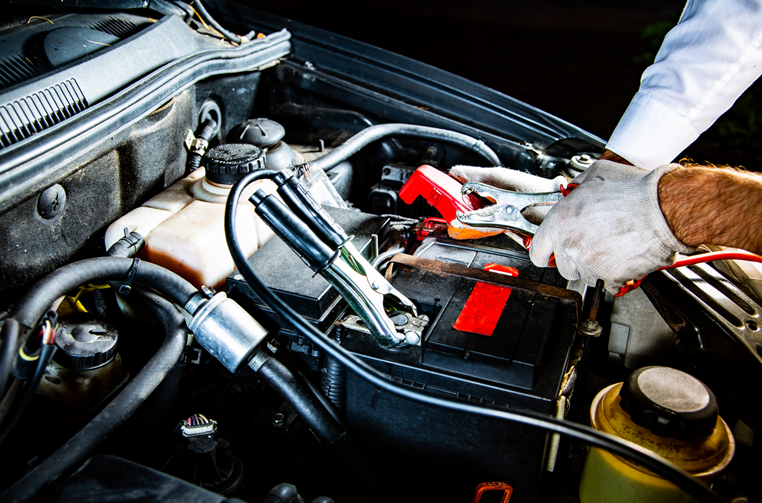What is lifepo4 battery? Lets come look
Lithium Iron Phosphate Like other batteries, LiFePO4 batteries are made from electricity-generating electrochemical cells that power electrical devices. A LiFePO4 battery consists of a positive electrode, positive electrode, separator, electrolyte, positive and negative current collectors. The positive terminal of the battery is called the cathode and the negative terminal is called the anode. Anode terminal as Li-ion source. The electrolyte carries positively charged lithium ions from the anode to the cathode and vice versa through the separator. The movement of lithium ions generates free electrons in the anode. Thus, electrons will flow through the external circuit to the cathode, the positive terminal. So when there is an electrical load, current will flow from the positive terminal to the negative terminal connected across the battery. Batteries consist of concentric alternating layers of negative and positive electrode materials, with separator layers positioned between these layers. The battery is then filled with electrolyte, allowing ion conduction.
The manufacturing method for the cathode terminal must be able to release large amounts of lithium ions during battery operation. The most common cathode material is Licoo2, but this material has some disadvantages. Therefore, LiFePO4 can be used as a substitute for LiCoO2. More recently, anode terminals have been made from natural or synthetic graphite. However, with the advancement of technology, lithium titanate (LTO) has become a very promising anode material to replace graphite. The most commonly used electrolyte consists of lithium salts, such as LiPF6 in organic solution.
The next section discusses how LiFePO4 charge and discharge cycles work:
State of charge: positive electrode and negative electrode composed of lithium iron phosphate. Iron ions and phosphate ions form a grid, and lithium ions are loosely trapped. When the battery is charged, these lithium ions are pulled across the separator to the negative graphite electrode, which can trap and hold these crossed lithium ions. The membrane is made of a polymer (plastic) and has many small pores that allow lithium ions to pass through easily. The battery will be fully charged when all the positive lithium ions available in the cathode terminal reach the anode terminal and are correspondingly stored between the graphene layers.

Assuming four single-cell batteries in series, this converts the battery pack’s voltage to about 12 volts for analysis. LiFePO4 battery charging can be divided into two phases:
Constant current charging: In the first stage of charging, the current is kept constant, and the charging rate is 0.5C, which means the battery will be charged at half capacity. For example, when charging a battery with a capacity of 200Ah, the charge rate will remain constant at 100Amp.
During constant current charging, the charging voltage of the battery will slowly rise to a “sink” voltage of 14.4 V.
Saturation charging: Once the battery is 90% charged, that is, the absorption voltage is reached, the battery will enter the second charging stage, which is called saturation charging. At this point, the battery voltage remains constant and the current will drop steadily. 100% state of charge (SOC) is reached once the current has dropped to approximately 5% to 10% of the battery’s Ah rating.
Discharge state: As mentioned earlier, during the charging cycle of LiFePO4 in the battery, the positive lithium ions released from the positive electrode move to the negative electrode through the electrolyte and are stored there. When all available lithium ions have reached the negative terminal, the battery can be fully charged. When a rechargeable battery is connected to an electrical load, positive ions move through the separator from the negative terminal back to the positive terminal. At the same time, electrons flow through the external circuit, causing current to flow through the electrical load circuit, and the battery releases its stored energy. Electrons cannot flow through the electrolyte because of the insulating barrier (i.e., the separator). When the battery is fully discharged, all lithium ions are moved back to the lithium iron phosphate electrode.
-
 Power Up Anytime: The Ultimate Emergency Starter Battery Are you tired of being stranded on the side of the road with a dead battery? Do you want to be prepared for any emergency situation? Look no further than the Power Up Anytime, the ultimate emergency starter battery. With the Power Up Anytime, you can jump start your car...Citeşte mai mult
Power Up Anytime: The Ultimate Emergency Starter Battery Are you tired of being stranded on the side of the road with a dead battery? Do you want to be prepared for any emergency situation? Look no further than the Power Up Anytime, the ultimate emergency starter battery. With the Power Up Anytime, you can jump start your car...Citeşte mai mult -
 With the increasing demand for clean and sustainable energy solutions, lithium batteries have gained significant popularity in recent years. Among the various types of lithium batteries available in the market, the 100Ah Lithium Iron Phosphate (LiFePO4) battery stands out for its long-lasting power and numerous benefits. In this article, we will delve into the features and advantages of the 100Ah...Citeşte mai mult
With the increasing demand for clean and sustainable energy solutions, lithium batteries have gained significant popularity in recent years. Among the various types of lithium batteries available in the market, the 100Ah Lithium Iron Phosphate (LiFePO4) battery stands out for its long-lasting power and numerous benefits. In this article, we will delve into the features and advantages of the 100Ah...Citeşte mai mult -
 Solar and onshore wind are currently the cheapest sources of electricity. So there's never been a better time to get into the solar game and enjoy a sense of innocence and resplendent inner peace. The biggest problem with solar and wind power is storing the energy generated for later use. However, this problem is gradually being overcome by newer and...Citeşte mai mult
Solar and onshore wind are currently the cheapest sources of electricity. So there's never been a better time to get into the solar game and enjoy a sense of innocence and resplendent inner peace. The biggest problem with solar and wind power is storing the energy generated for later use. However, this problem is gradually being overcome by newer and...Citeşte mai mult -
 Electric vehicles (EVs) are rapidly gaining popularity as a sustainable alternative to traditional gasoline-powered cars. One of the most critical components of an EV is its battery. Lithium-ion batteries have emerged as the frontrunner in this field, paving the way for the future of electric mobility. This article explores the significance of lithium batteries and their role in powering the...Citeşte mai mult
Electric vehicles (EVs) are rapidly gaining popularity as a sustainable alternative to traditional gasoline-powered cars. One of the most critical components of an EV is its battery. Lithium-ion batteries have emerged as the frontrunner in this field, paving the way for the future of electric mobility. This article explores the significance of lithium batteries and their role in powering the...Citeşte mai mult -
 LiFePO4 batteries are a popular choice for motorcycle batteries due to their various benefits. In this article, we will discuss the advantages of LiFePO4 motorcycle batteries. 1. Longer Lifespan One of the most significant benefits of LiFePO4 motorcycle batteries is their longer lifespan. These batteries can last up to ten times longer than other types of batteries, which...Citeşte mai mult
LiFePO4 batteries are a popular choice for motorcycle batteries due to their various benefits. In this article, we will discuss the advantages of LiFePO4 motorcycle batteries. 1. Longer Lifespan One of the most significant benefits of LiFePO4 motorcycle batteries is their longer lifespan. These batteries can last up to ten times longer than other types of batteries, which...Citeşte mai mult -
 In recent years, the rise of electric forklifts has revolutionized the warehousing industry. These eco-friendly vehicles have proven to be more cost-effective, efficient, and environmentally friendly compared to their traditional counterparts. One crucial aspect that has contributed to the success of electric forklifts is the development of high-performance lithium batteries. With their numerous advantages, these batteries are undeniably the future...Citeşte mai mult
In recent years, the rise of electric forklifts has revolutionized the warehousing industry. These eco-friendly vehicles have proven to be more cost-effective, efficient, and environmentally friendly compared to their traditional counterparts. One crucial aspect that has contributed to the success of electric forklifts is the development of high-performance lithium batteries. With their numerous advantages, these batteries are undeniably the future...Citeşte mai mult -
 In recent years, there has been a growing demand for more efficient and reliable battery solutions, especially in the automotive industry. Lithium starter batteries have emerged as a popular choice for their compact size, lightweight, and high energy density. In this article, we will explore the benefits and applications of lithium starter batteries. Firstly, let's define what a starter...Citeşte mai mult
In recent years, there has been a growing demand for more efficient and reliable battery solutions, especially in the automotive industry. Lithium starter batteries have emerged as a popular choice for their compact size, lightweight, and high energy density. In this article, we will explore the benefits and applications of lithium starter batteries. Firstly, let's define what a starter...Citeşte mai mult

